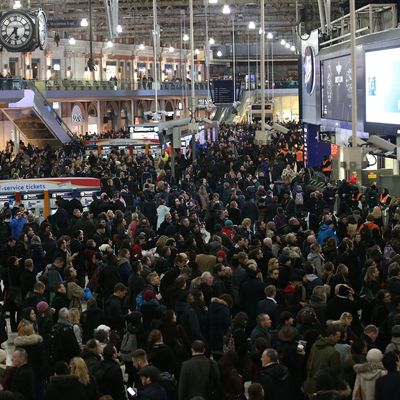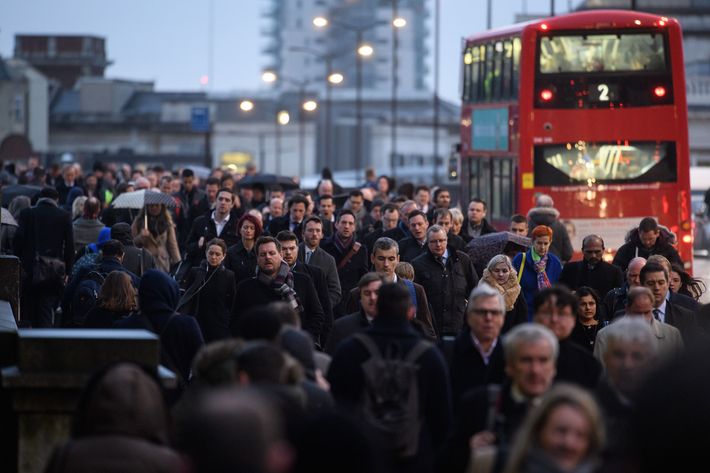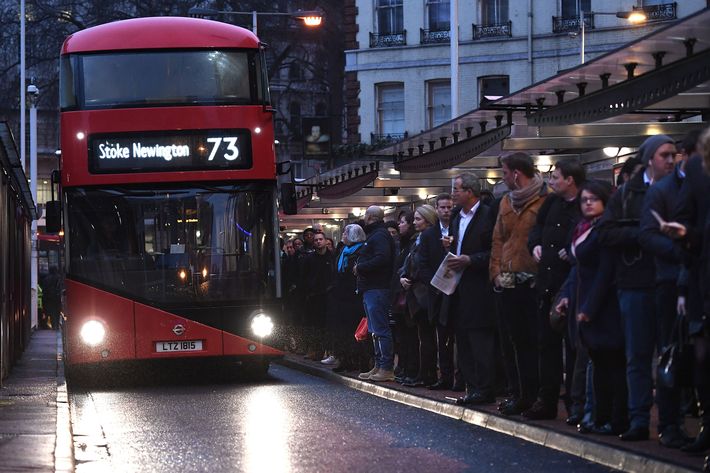
The MTA had a bit of a snow hangover on Monday morning, but take consolation in the fact that pretty much any commuter in London had it way worse. A 24-hour walkout brought the London Underground to a halt. Tube stations shut down or offered very limited service, snagging both the morning and evening commutes for millions of travelers.

The strike began Sunday night at 6 p.m., after last-minute talks to avert the walkout broke down. Staff are objecting to the closure of ticketing stations and job cuts.

Transport for London — or TfL, the transit operation — deployed “travel ambassadors” to help people get around and added 150 extra buses, but they were so jam-packed that they did little to alleviate travel woes. Taxi stands saw extra-long lines, and Uber surge pricing reportedly kicked in, at four times the normal fares.

The rainy morning didn’t stop people from trying to cycle to work. The city’s Santander bike shares saw a 149 percent increase in demand, reports the BBC.
Overcrowding at Clapham Junction, a busy transfer station, forced a mass evacuation.
The strike officially ended at 6 p.m, but straphangers were warned to head out early because delays and closures were still expected — as were more massive crowds. As Transport for London told riders, the problems would “get worse before they get better.”





























